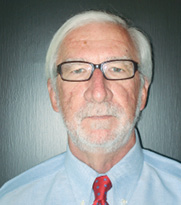Part 1 • Part 2 • Part 3 • Part 4 • Part 5 • Part 6 • Part 7
After monitoring the overall wholegoods sales mix as a percent of total dealership sales, the next wholegoods metric that should be continually measured, monitored and managed is the new and used wholegoods sales mix as a percent of total wholegood sales.
As written in the previous column, dealers interested in improving their cash flow and ensuring long term prosperity should seek to hold their total wholegood sales as a percent of total dealership sales to less than 70%, and would ideally lower that percentage to 60%. As written, the lower the wholegoods percentage, the higher the parts and service sales mix which realistically should be the cash cow components of an equipment dealership.
Similarly, in an equipment dealership, dealers and managers should be vigilant in managing the distribution of new and used equipment sales. In lawn and garden dealerships, or consumer product dealerships, this distribution is less important since the dealership is not encumbered with a myriad of trade-ins with every new equipment sale. On the other hand, equipment dealerships focused on "big" equipment where trade-ins are the norm and not the exception, a proper distribution is critical in sustaining dealership cash flow.
Since 2000, the average equipment dealer in North America, as defined by the annual "Cost of Doing Business Study," has had new sales account for 69.08% of their total equipment sales. Although that percentage has decreased to 65.86% for the 3 year period beginning with year 2010, the percent of new sales compared to used sales is still too high. With the longer time frame, used sales accounted for only 30.92% of total equipment sales while for the last 3 years, used equipment sales accounted for 34.14%, or an improvement of nearly 3.25%. Unfortunately, this improvement is not enough.
The used equipment sales metric will have the most consequential impact on dealership cash flow if used wholegood sales, as a percent of total wholegood sales, could account for at least 40% of those sales, and ideally approximate 50% of total dealership sales. And, as was also true with the first metric, there are only two ways to remedy an out of balance mix. Either generate fewer sales by one of the variables, and in this case that would mean new wholegood sales, or increase sales by the other variable, which in this case means additional used equipment sales.
Using the 2012 "Cost of Doing Business" numbers, the average dealer in North America had new equipment sales of $7,692,390, along with $3,787,520 in used equipment sales, for a total of $11,479,910 in wholegood sales. Therefore, new equipment sales accounted for 67% of total equipment sales while used equipment sales accounted for the remaining 33%.
Given the $3,787,520 in used equipment sales, if the dealership desired that amount to equal 40% of total equipment sales, rather than the actual 33%, then new equipment sales would have to decline by $2,011,110 to $5,681,280. Listen carefully and you can hear the V.P. of Sales at each of the major manufacturers, who have never made a retail sale, proclaiming the idiocy of this alternative. But that is what this is, an alternative. And managers have to make decisions after prudently and judiciously analyzing all of the alternatives regardless of how unpalatable those alternatives may be.
The second alternative to balancing the wholegoods sales mix would be to sell more used equipment relative to the existing new equipment sales. Using the above numbers, for the used equipment to equal 40%, used sales would have to approximate $5,128,260, or an increase in used sales of $1,340,740. Such a strategy would undoubtedly have to increase the used equipment turnover, which is a metric that will be discussed in a future column.
Balancing the equipment sales mix is a manifestation of the dealer's philosophy. If the dealer is market share driven, they will find either reducing new equipment sales or maintaining new equipment sales unpalatable as their thrust is to keep their manufacturer happy. Similarly, if they are profit driven, they will want to at least maintain new equipment sales since nearly 50% of the average dealer's profits in 2012 were the result of "cash/volume discounts." On the other hand, dealers who focus on maximizing dealership cash flow recognize that there is virtually no cash on the sale of a new piece of equipment and that the cash resides in the used; and more specifically, in the wash-out unit. Thus, dealers focused on cash flow will be diligent in speeding up the sale of used equipment.
Fortuna, the Roman goddess of fortune, was thought to fancy the deliberate and favor the bold. While Fortuna may have smiled upon the bold, she most assuredly laughed at the impetuous. Dealers interested in mastering their own fate should indeed be deliberate, diligent, bold and audacious when seeking to improve their all important sales metrics.






